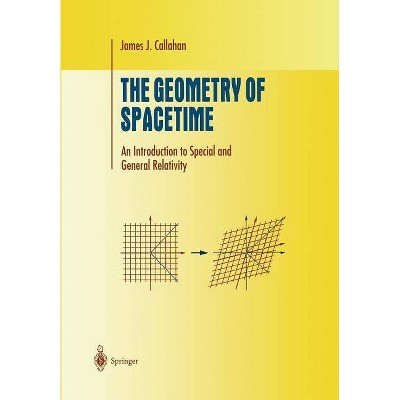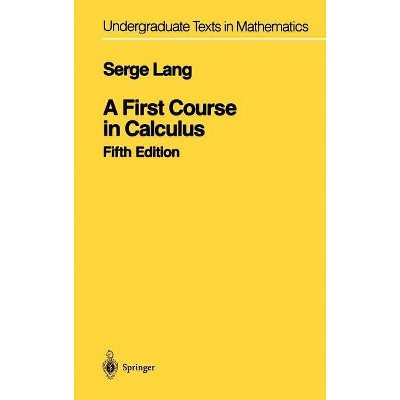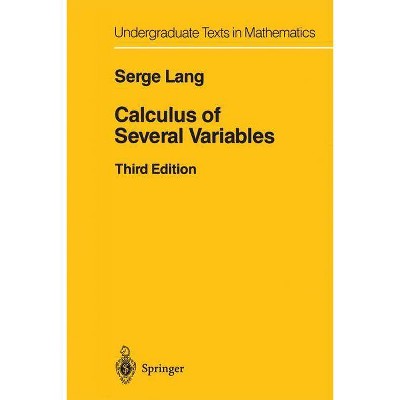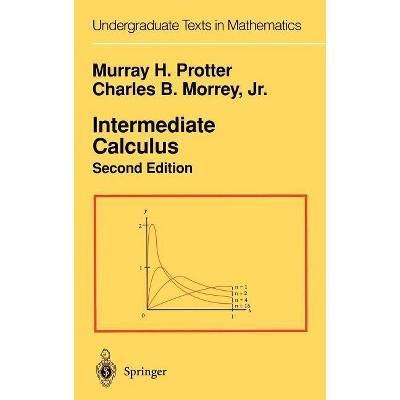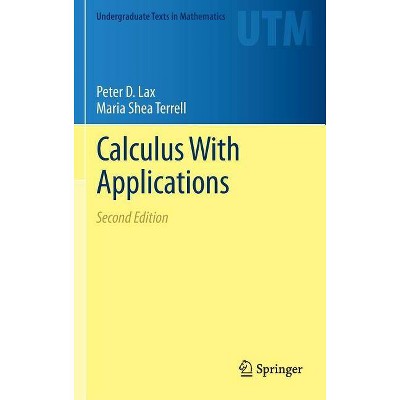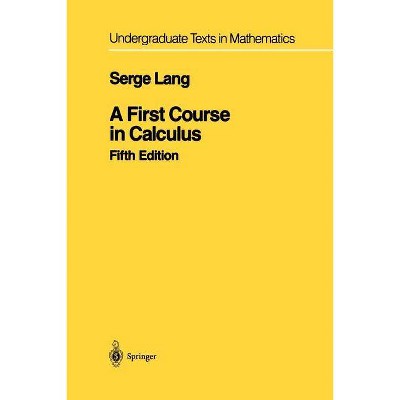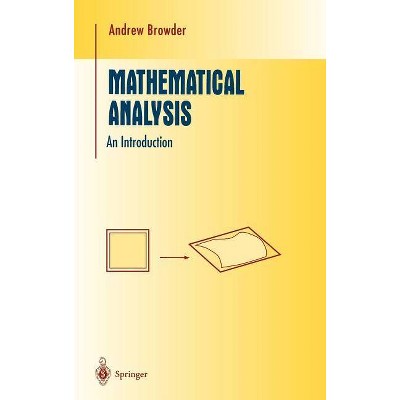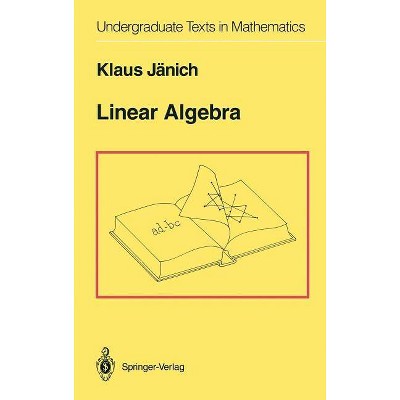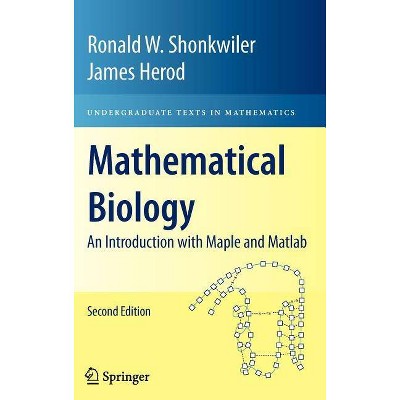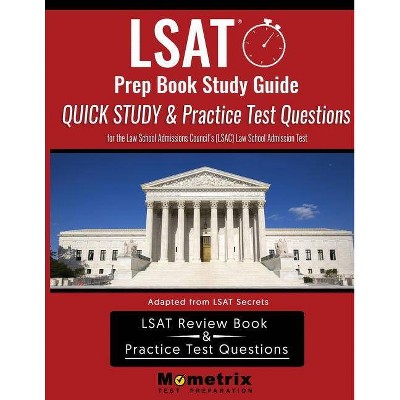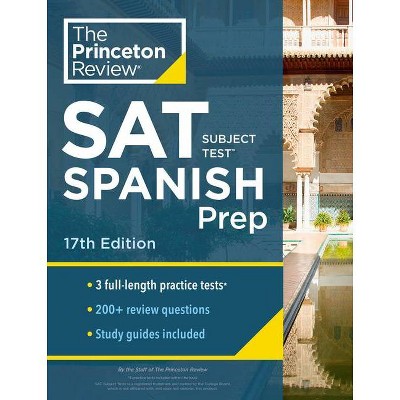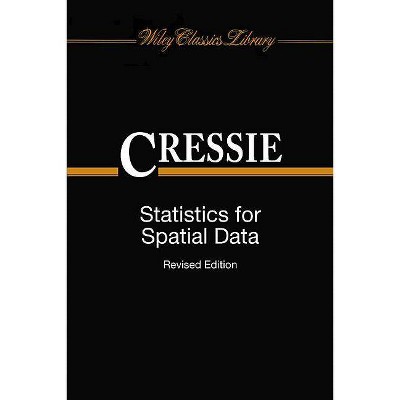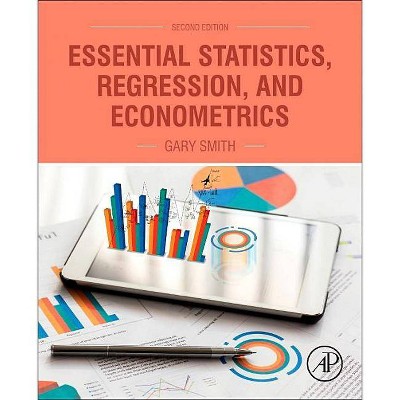Advanced Calculus - (Undergraduate Texts in Mathematics) by James J Callahan (Hardcover)

Similar Products
Products of same category from the store
AllProduct info
<p/><br></br><p><b> About the Book </b></p></br></br>With a fresh geometric approach that incorporates more than 250 illustrations, this textbook sets itself apart from all others in advanced calculus. Besides the classical capstones--the change of variables formula, implicit and inverse function theorems, the integral theorems of Gauss and Stokes--the text treats other important topics in differential analysis, such as Morse's lemma and the Poincaré lemma. The ideas behind most topics can be understood with just two or three variables. This is a textbook for undergraduates and graduate students in mathematics, the physical sciences, and economics. There is enough material for a year-long course on advanced calculus and for a variety of semester courses--including topics in geometry. The measured pace of the book, with its extensive examples and illustrations, make it especially suitable for independent study.<p/><br></br><p><b> Book Synopsis </b></p></br></br>A half-century ago, advanced calculus was a well-de?ned subject at the core of the undergraduate mathematics curriulum. The classic texts of Taylor [19], Buck [1], Widder [21], and Kaplan [9], for example, show some of the ways it was approached. Over time, certain aspects of the course came to be seen as more signi?cant--those seen as giving a rigorous foundation to calculus--and they - came the basis for a new course, an introduction to real analysis, that eventually supplanted advanced calculus in the core. Advanced calculus did not, in the process, become less important, but its role in the curriculum changed. In fact, a bifurcation occurred. In one direction we got c- culus on n-manifolds, a course beyond the practical reach of many undergraduates; in the other, we got calculus in two and three dimensions but still with the theorems of Stokes and Gauss as the goal. The latter course is intended for everyone who has had a year-long introduction to calculus; it often has a name like Calculus III. In my experience, though, it does not manage to accomplish what the old advancedcalculus course did. Multivariable calculusnaturallysplits intothreeparts: (1)severalfunctionsofonevariable, (2)one function of several variables, and (3) several functions of several variables. The ?rst two are well-developed in Calculus III, but the third is really too large and varied to be treated satisfactorily in the time remaining at the end of a semester. To put it another way: Green's theorem ?ts comfortably; Stokes' and Gauss' do not.<p/><br></br><p><b> From the Back Cover </b></p></br></br>With a fresh geometric approach that incorporates more than 250 illustrations, this textbook sets itself apart from all others in advanced calculus. Besides the classical capstones--the change of variables formula, implicit and inverse function theorems, the integral theorems of Gauss and Stokes--the text treats other important topics in differential analysis, such as Morse's lemma and the Poincaré lemma. The ideas behind most topics can be understood with just two or three variables. This invites geometric visualization; the book incorporates modern computational tools to give visualization real power. Using 2D and 3D graphics, the book offers new insights into fundamental elements of the calculus of differentiable maps, such as the role of the derivative as the local linear approximation to a map and its role in the change of variables formula for multiple integrals. The geometric theme continues with an analysis of the physical meaning of the divergence and the curl at a level of detail not found in other advanced calculus books. Advanced Calculus: A Geometric View is a textbook for undergraduates and graduate students in mathematics, the physical sciences, and economics. Prerequisites are an introduction to linear algebra and multivariable calculus. There is enough material for a year-long course on advanced calculus and for a variety of semester courses--including topics in geometry. It avoids duplicating the material of real analysis. The measured pace of the book, with its extensive examples and illustrations, make it especially suitable for independent study.<p/><br></br><p><b> Review Quotes </b></p></br></br><br><p>From the reviews: </p><p>"Many concepts in calculus and linear algebra have obvious geometric interpretations. ... This book differs from other advanced calculus works ... it can serve as a useful reference for professors. ... it is the adopted course resource, its inclusion in a college library's collection should be determined by the size and interests of the mathematics faculty. Summing Up ... . Upper-division undergraduate through professional collections." (C. Bauer, Choice, Vol. 48 (8), April, 2011)</p><p>"The author of this book sees an opportunity to bring back a more geometric, visual and physically-motivated approach to the subject. ... The author makes exceptionally good use of two and three-dimensional graphics. Drawings and figures are abundant and strongly support his exposition. Exercises are plentiful and they cover a range from routine computational work to proofs and extensions of results from the text. ... Strong students ... are likely to be attracted by the approach and the serious meaty content." (William J. Satzer, The Mathematical Association of America, January, 2011)</p><p>"A new geometric and visual approach to advanced calculus is presented. ... The book can be useful a textbook for beginners as well as a source of supplementary material for university teachers in calculus and analysis. ... the book meets a wide auditorium among undergraduate and graduate students in mathematics, physics, economics and in other fields which essentially use mathematical models. It is also very interesting for teachers and instructors in Calculus and Mathematical Analysis." (Sergei V. Rogosin, Zentralblatt MATH, Vol. 1205, 2011)</p><br><p/><br></br><p><b> About the Author </b></p></br></br>James J. Callahan is currently a professor of mathematics at Smith College. His previous Springer book is entitled <i>The Geometry of Spacetime: An Introduction to Special and General Relativity</i>. He was director of the NSF-funded Five College Calculus Project and a coauthor of <i>Calculus in Context</i>.
Price History
Price Archive shows prices from various stores, lets you see history and find the cheapest. There is no actual sale on the website. For all support, inquiry and suggestion messagescommunication@pricearchive.us
